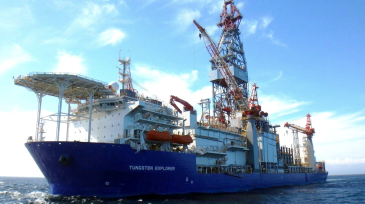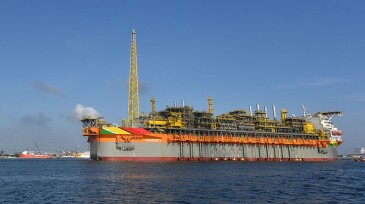Petroleum reserves
This study presents a novel hybrid approach to enhance fraud detection in scanned financial documents.
This paper provides insight into existing tools, methodologies, and processes that can help any capital project or organization improve predictability of outcome while mitigating risks and exploiting opportunities effectively.
Data and impartial viewpoints can help de-risk exploration portfolios and keep resource estimates in check.
-
ExxonMobil joins BP, Chevron, and TotalEnergies in greenlighting new investment projects in Iraq in 2025 as the government targets oil production of 6 million B/D by 2029.
-
The number of high-impact wells drilled across the globe this year are expected to be on trend with the most recent 5-year average.
-
The operator’s deepwater discovery in the Gulf of Mexico is potentially commercial, and government analysis indicates the gulf holds 1.3 billion BOE more reserves than estimated.
-
This paper presents three examples covering both gas and oil fields at different stages of their lives that show how estimated ultimate recovery (EUR) and the corresponding range of EUR uncertainty varies over the life of each field.
-
Since the late 1930s, the offshore industry has advanced from the first platform in 14 ft of water to the ultradeepwater 20K era. Driven by seismic, drilling, and development breakthroughs, the industry has pushed into deeper waters, high-pressure reservoirs, and new frontiers like Guyana, continually expanding the limits of offshore exploration.
-
The SPE Oil and Gas Reserves Committee has opened a period for public comments and feedback on the current 2018 PRMS.
-
SponsoredMOSAIC's advanced Automated Reconciliation to Reserves Workflows enhances accuracy, speeds up processes, and meets the need for precise asset valuation. Equip your reserves teams with reliable information and insights to reduce uncertainty, boost efficiency, and make smarter business decisions.
-
This paper discusses how a traditional stochastic approach in project economics used for screening and ranking can sometimes limit management visibility of all possible outcomes in a project.
-
This paper discusses how multiple reliable technologies may be used in concert to establish reasonable certainty for reserves estimates through the flexibility provided by the Petroleum Resources Management System.
-
This paper describes natural fractures and their effect on hydrocarbon productivity in the Vaca Muerta shale formation.
Page 1 of 7













